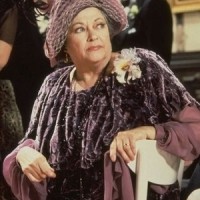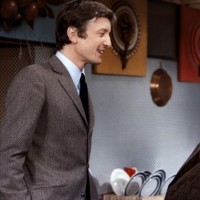Top Ten Differences Between the 1967 and 1991 Versions of "Oscar"
The comedy stage play “Oscar” from 1958 has been adapted twice for the screen: in 1967, there was a French movie directed by Édouard Molinaro, and in 1991, an American adaptation was released under the direction of John Landis. The original movie stars Louis de Funes as the protagonist Bertrand Barnier, Claude Gensac as his wife Germaine, Claude Riche as his accountant Christian Martin, Agathe Natanson as his daughter Colette, Sylvia Saurel as his accountant’s lover Jacqueline Bouillotte and Mario David as a possible fiancé for his daughter Philippe Dubois. The remake stars Sylvester Stallone as Angelo “Snaps” Provolone, Ornella Muti as his wife Sofia, Vincent Spano as his accountant Anthony Rossano, Marisa Tomei as his daughter Lisa, Elizabeth Barondes as his accountant’s lover Theresa and Tim Curry as possible fiancé Dr. Thornton Poole.The basic story that both versions got in common revolves around a rich man who gets visited by his accountant early in the morning, who asks him for a significant raise of his salary. He fell in love with a woman who comes from a wealthy family, and his parents won’t let him marry her if he’s poor. Despite being shocked, he finally gives in and promises him more money - only for the accountant to reveal the woman he loves and also has an affair with is his boss’s daughter. He also admits to have accumulated a lot of money by having steadily stolen little sums from his boss, that he plans on giving to his wife on the wedding day. Furiously, he talks to his daughter about the situation who admits having a boyfriend and also wanting to marry him. As her father denies, she follows her maid’s advice and pretends to be pregnant, forcing him to give him to the marriage plans. The maid also plans to marry herself: she is engaged to a rich friend of the family, causing her to quit her job and move out of the house. Everything seems to be solved, but then a young woman appears and tells the protagonist that she has posed as his daughter in order to pretend she comes from a rich family in front of her lover - who she reveals to be his accountant. Realizing that his daughter’s lover is in fact another man, who then turns out to be his ex-chauffeur Oscar, who left the country after having been fired. Everything only gets more complex and furious from then on, including a substitute husband and three bags that constantly get mixed up, one with jewelry, one with money and one with the maid's underwear.
The original turned to a cult classic in several European countries over the decades, mostly due to Louis de Funes’ huge popularity and iconic legacy, the remake was also mostly well received over here. The 60s movie is widely unknown in the US, while the more recent version was met with lukewarm reviews.
Both versions rank among my personal favorite comedy movies, and I have seen all two numerous times in my life ever since I was a child, and I still watch them every few months. What makes the remake almost as good as the original is that it takes the story and makes something independent and new out of it. There are several additions to the plot and new twists in the story, and the humor itself isn’t just merely copied, it has completely new gags that always work. These differences make both films an individual, hilarious experience you can watch over and over again. The 1991 version is a prime example for a well done remake, that keeps the spirit of the original while being a great movie in its own right.
Let’s take a look at the biggest differences between the films.
SPOILERS follow in the list.

The original movie is set in the then current present right where the movie was shot and released. The remake is set 60 years before the movie was released, also where the film was shot. Naturally, all names except for Oscar's were altered: the original names were all French, the names in the remake are either English or Italian, as the movie's characters are (ex)-Mafia mobsters.

One of the biggest differences of the plot concerns the titular character. In both movies, Oscar only has a minor role and is barely on-screen, but in the 1967 version he appears halfway through the movie to come back to Colette, only to be beaten up by Dubois and running away. He comes back at the end of the movie to propose to Colette, which both she and Barnier agree to. In the 1991 version, the character does not appear until the very last moment, which is the wedding of both Theresa and Rossano, and Lisa and Dr. Poole, who fell in love over the course of the movie, where he objects to the wedding. Provolone advises his henchmen to get rid of him - and they carry him out of the church.

In desperate need for a husband for the seemingly pregnant daughter of Barnier/Provolone, Martin/Rossano comes up with the idea of Colette/Lisa marrying one of her father's acquaintances. Philippe Dubois is the masseur of Barnier, and Dr. Thornton Poole is an English linguist who Provolone hired to teach him proper English.

Naturally, the two movies are set in a different environment. Both houses the films are set in are luxurious and the protagonists are wealthy, but still, the characters in the 60s movie are sneaky and corrupt but harmless, while a majority of the characters in the remake are either (ex-)criminals themselves or worked for them.

A recurring double side plot is that no one believes Provolone that he wants to become a better and honest person. The police and a rivaling gangster, Vendetti, constantly observe him and interpret his planned meeting with the bankers as a fusion with another Mafia clan.

In the original version we have: Bertrand Barnier, his wife Germaine, his daughter Colette, his butler Charles, his masseur Philippe Dubois, his maid and soon-to-be-Baronesse Bernadette, his accountant Christian Martin, his ex-chauffeur Oscar, Martin's lover Jacqueline, Jacqueline's mother Charlotte and Bernadette's chauffeur. All of these character appear in the remake as well, some more altered than others (and with Charles being split into three ex-henchmen of Provolone who now work as two butlers and a cook), but we also get more characters, as well as a few extras, which aren't present in the original (except for perhaps the opening titles, which follow Martin's car driving to Barnier). There is Provolone's family, a few policemen, a few gangsters, a few paparazzis, four bankers, a priest, two tailors and a spy.

Christian Martin gives Bertrand Barnier a couple of contracts for him to sign to grant him to keep his job and even get a promotion, including one blank paper to Barnier also signs carelessly. Later on, we get to learn that Martin added a text to it granting him the full power over Barnier's bank account, stealing him money in order to blackmail him. Anthony Rossano has a higher position than Martin to begin with, and already has full power long before the movie is set.

Germaine is often oblivious to what is going on in her house and is extremely carefree about all the actions, even somewhat amused. Sofia Provolone's first appearance is her angrily stomping into the house and shouting at her husband, and she goes on throughout the film. The difference can be best seen in one of the film's final moments, when the character captures her husband arm in arm with Jacqueline's/Theresa's mother. Germaine is a bit puzzled, and asks who the woman is, and then just walks off. Sofia on the other hand becomes jealous and advises her not to get too comfortable.

Of course, Provolone did more horrible things in his past, but Barnier also is a manipulative and dishonest industrial captain. The difference is that Provolone tries his best to become an honorable man which is constantly challenged throughout the film, while Barnier never has such plans to begin with.

You could easily take this as just one gag that wasn't used in the remake like many others, but this one scene in which Barnier starts losing his mind, talks gibberish, jumps around wildly and pretends his nose is a violin like a lunatic became the original movie's best known scene. But apart from one brief moment in which Provolone bangs his head against the table, he remains sane throughout the film.